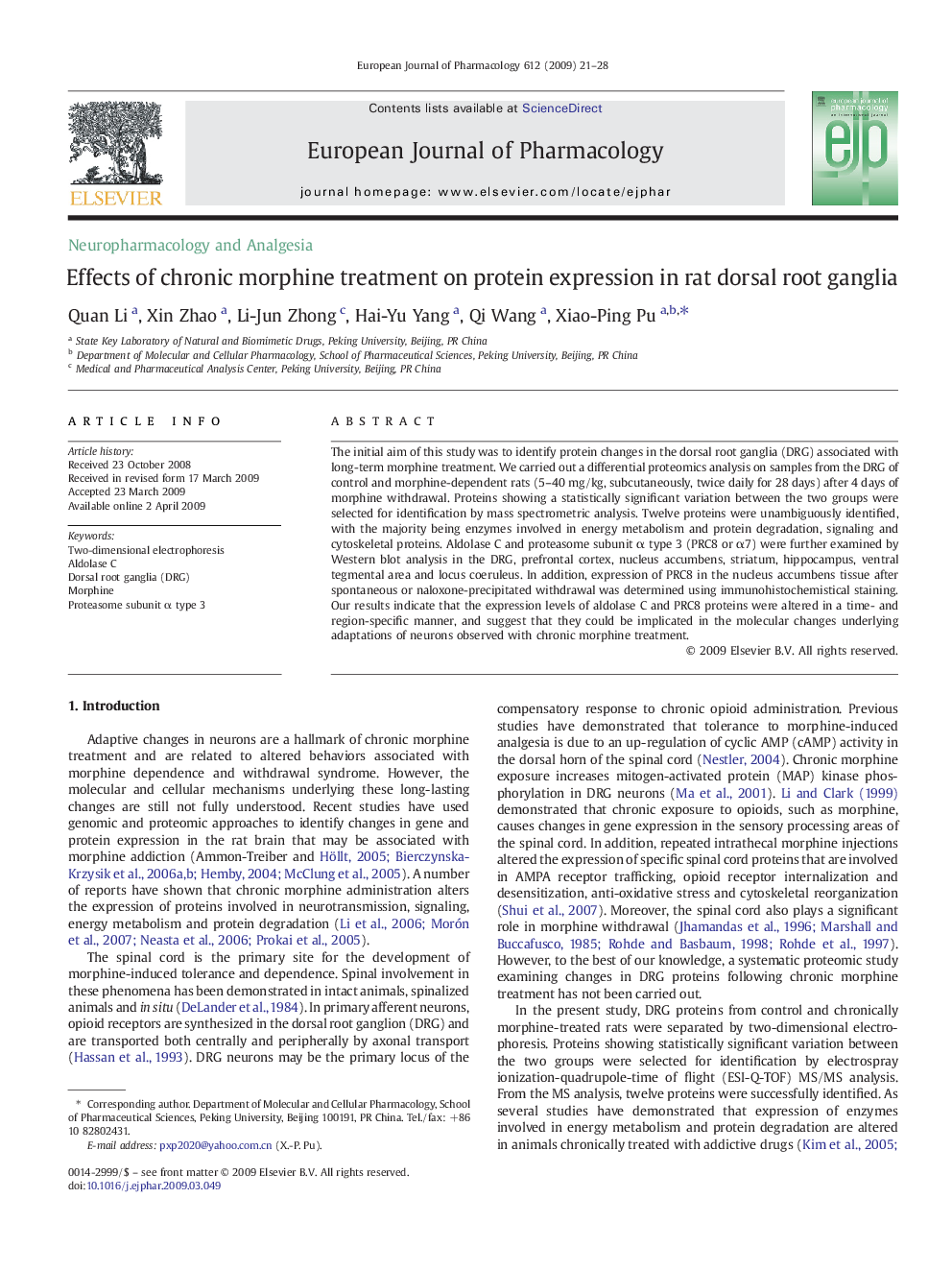| Article ID | Journal | Published Year | Pages | File Type |
|---|---|---|---|---|
| 2534245 | European Journal of Pharmacology | 2009 | 8 Pages |
Abstract
The initial aim of this study was to identify protein changes in the dorsal root ganglia (DRG) associated with long-term morphine treatment. We carried out a differential proteomics analysis on samples from the DRG of control and morphine-dependent rats (5-40 mg/kg, subcutaneously, twice daily for 28 days) after 4 days of morphine withdrawal. Proteins showing a statistically significant variation between the two groups were selected for identification by mass spectrometric analysis. Twelve proteins were unambiguously identified, with the majority being enzymes involved in energy metabolism and protein degradation, signaling and cytoskeletal proteins. Aldolase C and proteasome subunit α type 3 (PRC8 or α7) were further examined by Western blot analysis in the DRG, prefrontal cortex, nucleus accumbens, striatum, hippocampus, ventral tegmental area and locus coeruleus. In addition, expression of PRC8 in the nucleus accumbens tissue after spontaneous or naloxone-precipitated withdrawal was determined using immunohistochemistical staining. Our results indicate that the expression levels of aldolase C and PRC8 proteins were altered in a time- and region-specific manner, and suggest that they could be implicated in the molecular changes underlying adaptations of neurons observed with chronic morphine treatment.
Related Topics
Life Sciences
Neuroscience
Cellular and Molecular Neuroscience
Authors
Quan Li, Xin Zhao, Li-Jun Zhong, Hai-Yu Yang, Qi Wang, Xiao-Ping Pu,
